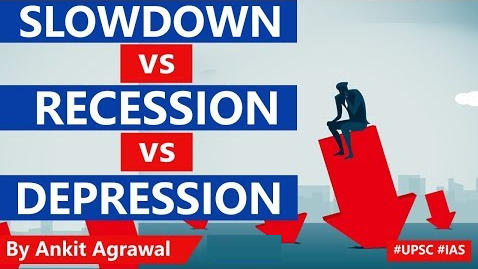Table of Contents
ECONOMIC CYCLE

RECESSION
- Recession refers to a phase of the downturn in the economic cycle when there is a fall in the country’s GDP for some quarters.
- It begins after the economy reaches a peak of activity and ends as the economy reaches its trough.
- A common rule of thumb for recessions is two quarters of negative GDP growth.

- ‘A recession is a period of decline in total output, income, employment and trade, usually lasting six months to a year.’

DEPRESSION
- Depression is a prolonged period of economic recession marked by a significant decline in income and employment.
- When recession, turns out to be more severe and continues for a long term.
- A common rule of thumb for depression is a negative GDP of 10% of more, for more than 3 years.

INTERESTING FACT
- Before the Great Depression, all economic downturns were called depressions.
- After the Great Depression, the phrase ‘recession’ was used to describe downturns.
- It was done so that people wouldn’t remember the terrible time that they had during the Great Depression.
SLOWDOWN
- A slowdown, on the other hand, simply means that the pace of the GDP growth has decreased.
- During slowdown, the GDP growth is still positive but the rate of growth has decreased.
India Is At Which Stage In 2019
- At 5%, India’s economy registered its slowest gross domestic product (GDP) growth rate since 2014.
- The current GDP figures are no indication of any impending recession.
- However, the rate of growth has slowed down.
- Hence India is facing slowdown.


ANY DEPRESSION SINCE 1930?
- There hasn’t been a decline large enough to call it a ‘depression’ since the Great Depression.
- However, the recession that began in 2007 has been called ‘The Great Recession’
- It was because of high unemployment for a long time, and the recession lasted for 18 months.


Latest Burning Issues | Free PDF






















 WhatsApp
WhatsApp